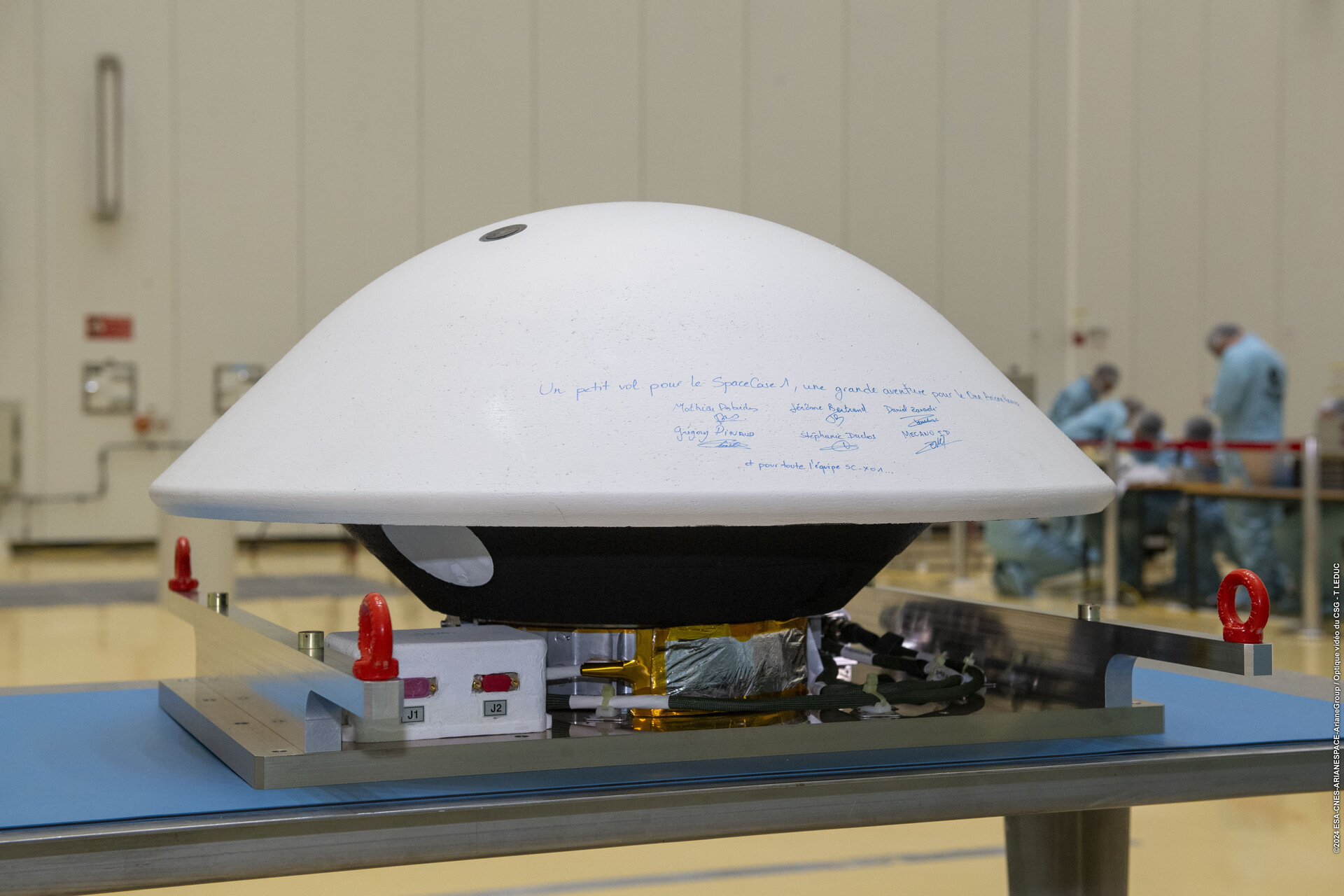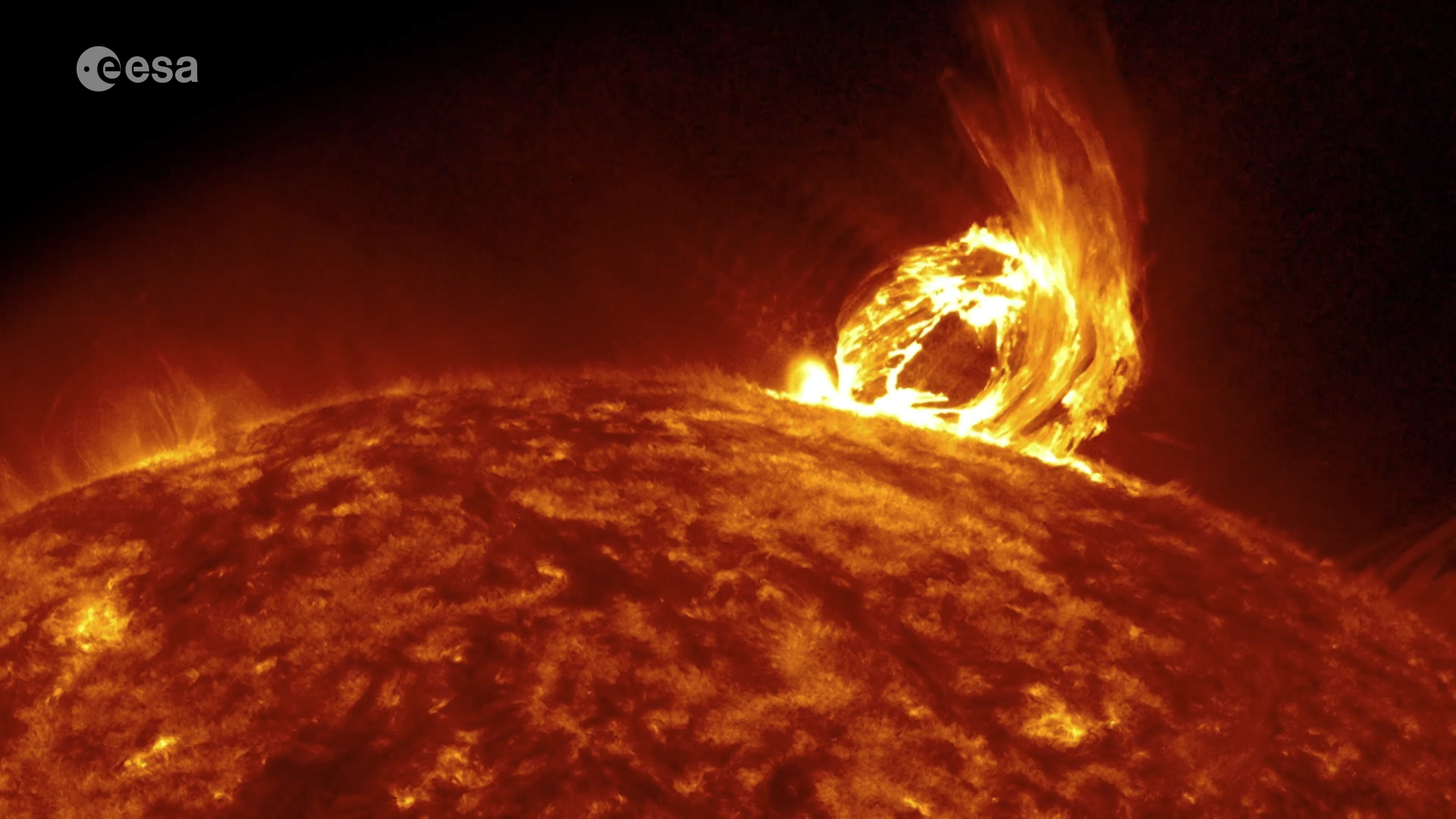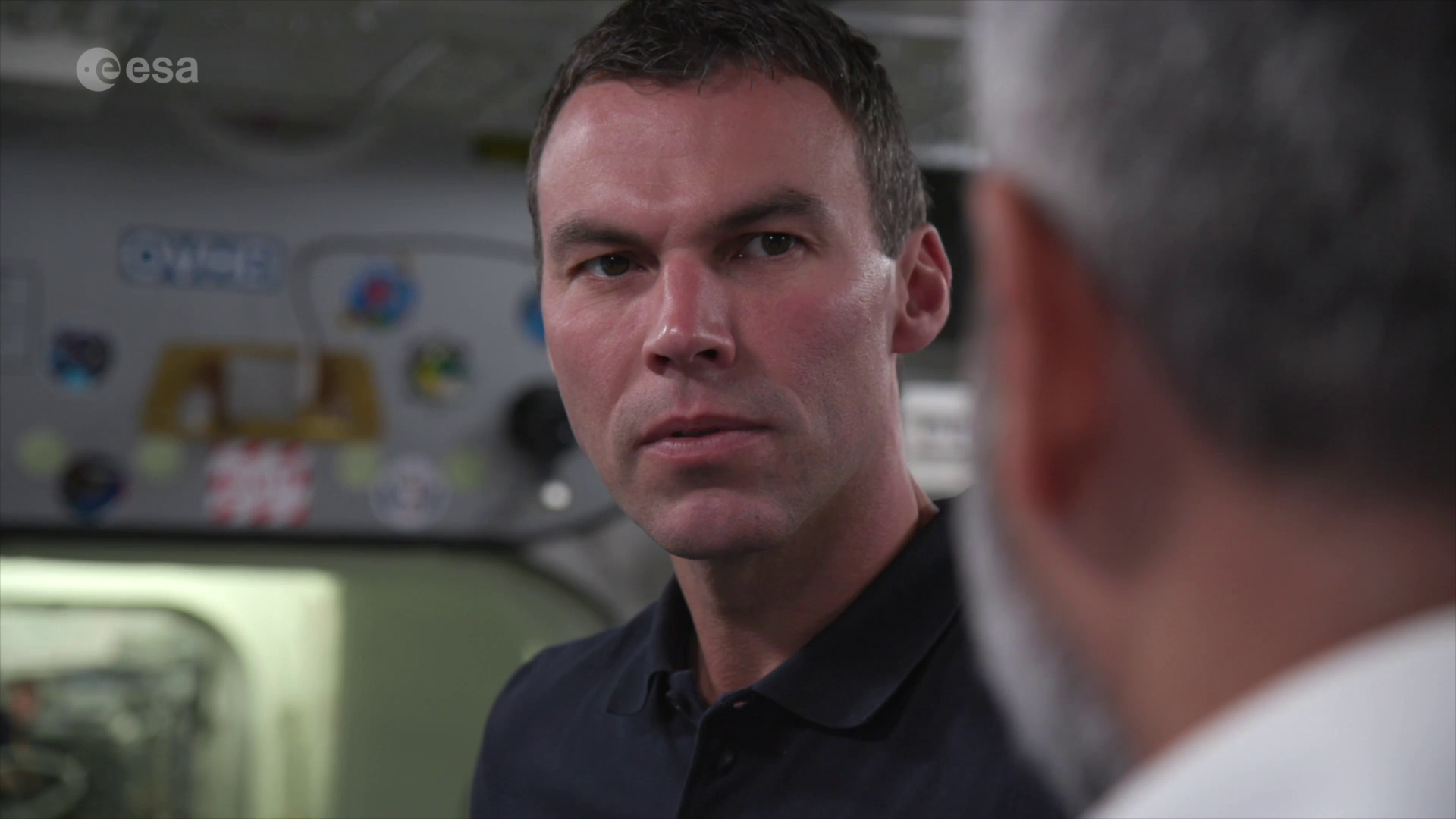06/06/2024
1176 views
11 likes
Europe’s newest rocket soon launches, taking with it many space missions each with a unique objective, destination and team at home, cheering them on. Whether launching new satellites to look back and study Earth, peer out to deep space or test important new technologies in orbit, Ariane 6’s first flight will showcase the versatility and flexibility of this impressive, heavy-lift launcher. Read on for all about SpaceCase SC-X01, then see who else is flying first.
On the multitude of missions on the first Ariane 6 flight, two have a totally different objective than the satellites being launched: crash back on Earth and splashdown far from land in the Pacific Ocean.
SpaceCase SC-X01 is built by ArianeGroup, the same company behind the Ariane 6 rocket that will launch it into space. Staying attached to the rocket’s upper stage for the most part of its three-hour mission, SpaceCase will detach just minutes before the upper stage deorbits and head for a fiery controlled destruction in Earth’s atmosphere.
Whereas the upper stage is designed to burn up harmlessly, SpaceCase SC-X01 is going to show off the opposite side of human engineering: survive the intense heat that builds up as spacecraft return to Earth at speeds of 28 000 km/h.
Structural heat resistant carbon-resin.
Most spacecraft designed to return to Earth use ablative materials – as the outer layer heats up it will burn off and be whisked away, taking the heat build-up away with it, and on to the next layer until splashdown.
SpaceCase SCX-01 uses the same principle but its unique selling point is that its heat-protective shield — made of carbon resin called NAXECO® resin – is also the structure. Whereas most spacecraft heat shields are glued or bolted on to the spacecraft structure, often in tiles, SpaceCase SCX-01’s monolithic heatshield is the structure of the capsule itself. This has many benefits from weight to simplicity and cost.
Short blaze of glory
A few minutes after detaching from the Ariane 6 upper stage, SpaceCase will already start to feel the heat with temperatures outside reaching 2400°C, the designers aim to keep the temperatures inside below 60 degrees for the avionics… or samples in the future.
“For us actually it won’t be hot enough,” says Jérôme Bertrand, ArianeGroup project lead for SpaceCase and planetary landing expert, “our material can handle more such as Mars or Moon return with re-entry speeds greater than 40 000 km/h, but for an Earth reentry this is as high as we can expect the temperatures to rise.”
To keep costs and production time low, SpaceCase is simple by design. The innovations in this demonstrator include the shape of the capsule that could be used for a sample return from space or another planet – it will orient itself with the heatshield pointing down due to its aerodynamic shape to prove the design and test the material.
Coming in fast at 28 000 km/h, SpaceCase will quickly reach terminal velocity – the fastest objects can fall – and splashdown in the Pacific Ocean far from any inhabitation at 250 km/h – roughly the same speed a passenger jet needs to take off.
Inside SpaceCase SC-X01, avionics will be recording heatshield temperatures and trajectory data and send it to the project team via satellite. There are no parachutes on and no intention to recover the hardware – that will be for a second mission. The team plans to use plug-and-play standard dimension CubeSats inside the vehicle on next tests in the future.
“The “Do Not Open – Property of ArianeGroup” written on SC-X01 is just in case it washes up on shore. We wanted to keep this project small, for a rapid, quick turnaround,” says Jérôme, “for this project the learning process to get SpaceCase built quickly was as important as the data we will get, we are a lot like YPSat in this regard.”
“It is very motivating for teams to work on these types of projects,” concludes Jérôme, “by building SpaceCase SC-X01we have already given scientists ideas, just recently after a conference somebody came to me and said they would like to use SpaceCase to install a mass spectrometer inside our capsule to do some science when performing an atmospheric entry on Jupiter.”



